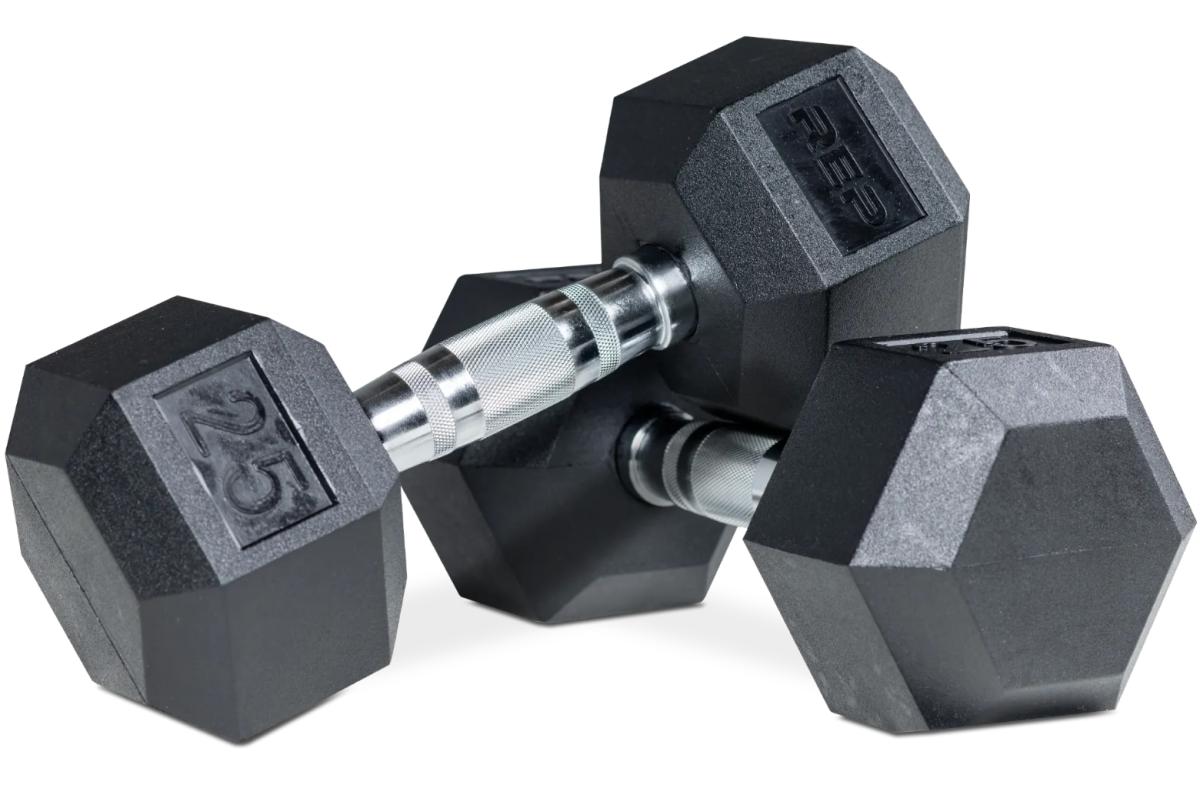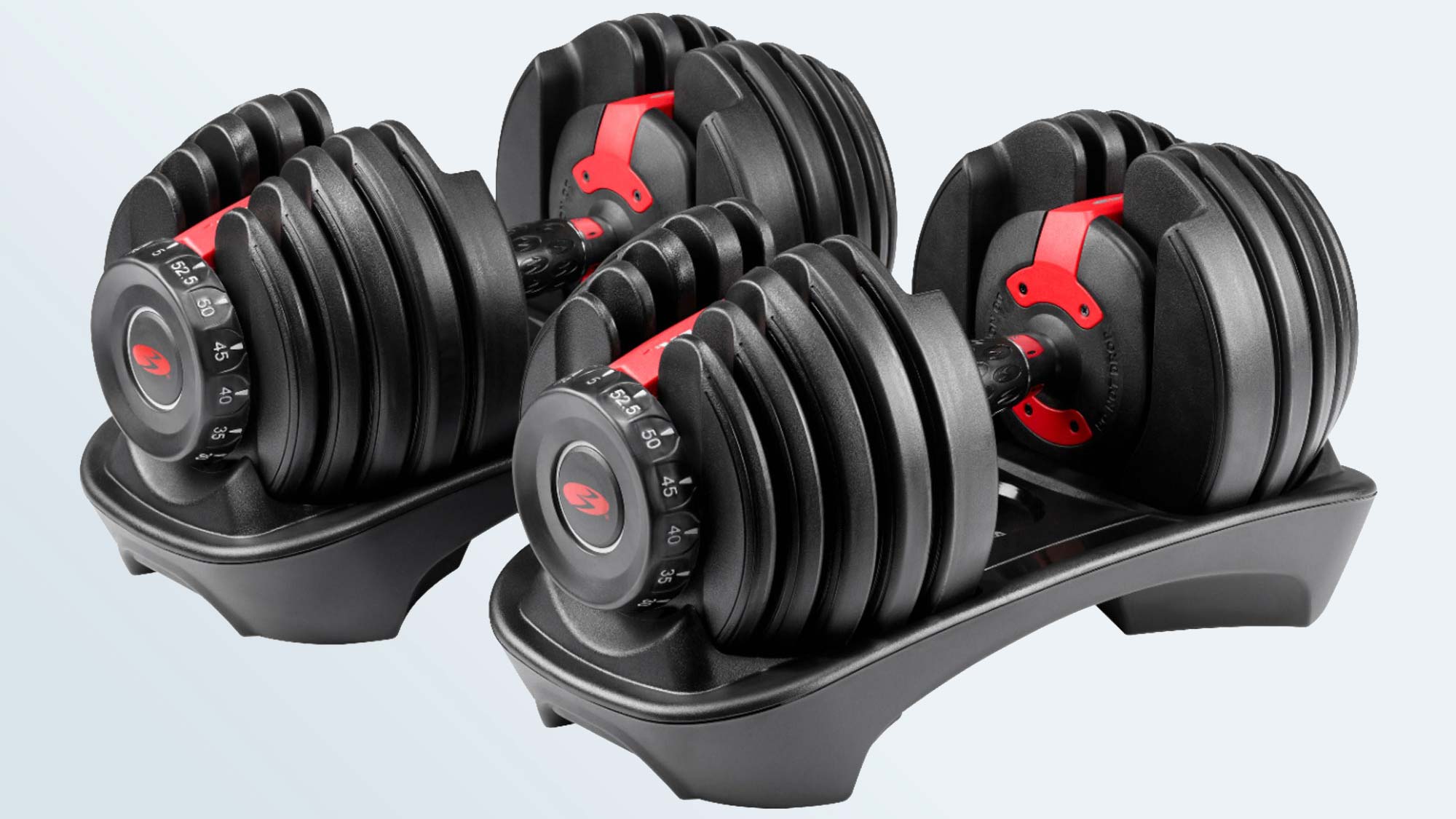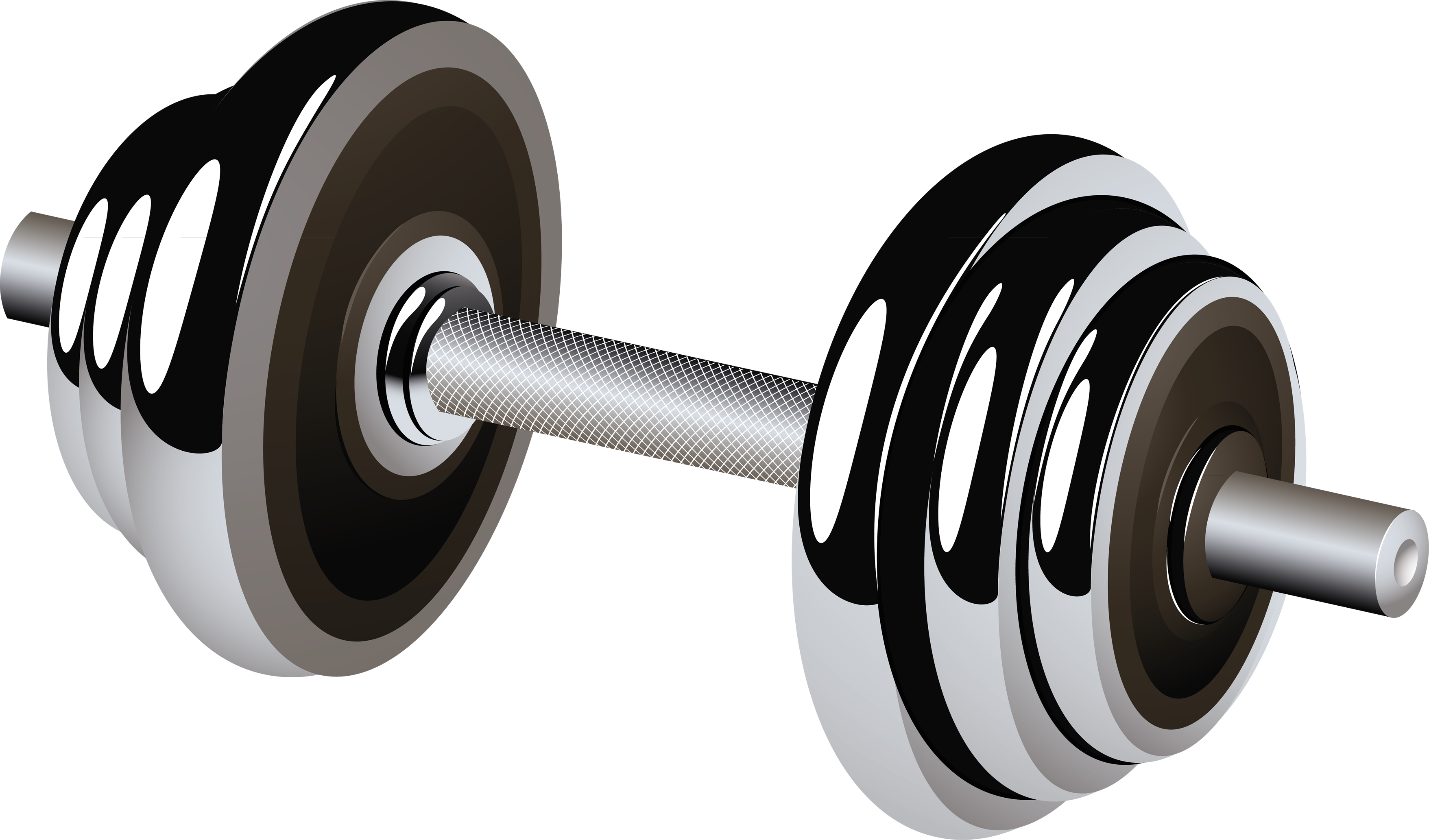Are you looking to give your shoulders that impressive, broad appearance? Do you want to build strength that helps with everyday movements and other lifts? Well, the dumbbell lateral raise is one of the most commonly used exercises to target the “side” delt, that important muscle group that gives your shoulders their width. It's a key move for anyone aiming for well-rounded, defined upper body strength, and honestly, it's pretty satisfying to see those shoulders grow.
So, it's almost a given that many people want to include this exercise in their routine. Yet, there's a bit of a catch. People often perform this movement wrong and don’t hit their delts at all! This can be really frustrating, as you put in the effort but don't see the results you're hoping for. Learning the proper form, technique, and benefits of the dumbbell lateral raise, an isolation exercise for the lateral deltoids, can change everything for your shoulder development.
This guide will help you understand this exercise inside and out. We'll find out how to avoid common mistakes, look at some alternatives, and discuss training programs that include this exercise. You'll learn the proper form and variations, finding out the best weight, reps, and so much more. By the end, you'll have a clear path to building those strong, defined shoulders you're after, improving stability, and truly enhancing your fitness routine with expert tips and techniques.
Table of Contents
- The Heart of Shoulder Width: Understanding Your Side Delts
- Getting It Right: Proper Dumbbell Lateral Raise Form
- Why Bother? The Benefits of Lateral Raises
- Oops! Common Mistakes to Steer Clear Of
- Finding Your Sweet Spot: Weight and Reps
- Shaking Things Up: Variations and Alternatives
- Fitting It In: Your Workout Routine
- Frequently Asked Questions About Dumbbell Lateral Raises
- Wrapping It Up: Your Path to Better Shoulders
The Heart of Shoulder Width: Understanding Your Side Delts
Dumbbell lateral raises primarily target the lateral deltoids, which are the muscles that give your shoulders that wide, rounded look. These muscles are very, very important for creating shoulder width and roundness, truly making your physique pop. They're also part of a larger group of muscles that help with shoulder movement and stability, so working them properly helps in more ways than just looks. In fact, doing lateral raises is beneficial for improving the overall strength and health of your shoulders, which is pretty neat.
This exercise is an isolation movement, meaning it focuses almost entirely on one muscle group, which in this case is that middle deltoid head. This allows you to really concentrate on feeling the muscle work, which is something you can't always do with bigger, compound lifts. Knowing the anatomy and function of the lateral deltoids is, you know, key to performing the best types of lateral raise exercises to build them. It helps you connect your mind to your muscle, making each repetition count more.
Getting It Right: Proper Dumbbell Lateral Raise Form
Learning how to do dumbbell lateral raises with proper form and technique is, quite frankly, the most important part. As my text mentions, many people miss their target muscle entirely due to poor execution. This exercise targets the side of the shoulder (medial deltoid) and can improve shoulder mobility and stability, but only if done correctly. Let's break down the steps to make sure you're hitting those side delts every single time, which is, you know, the whole point.
Starting Your Lift
Start holding a pair of light dumbbells at your sides in a neutral position. Stand with a slight bend in your knees, which helps keep you stable. Squeezing your shoulder blades, abs, and glutes to create tension through your core is, like, really important. This provides a solid base for your movement and stops you from swinging the weights around. Your back should be straight, and your gaze should be forward. This initial setup is, honestly, half the battle for a good rep.
The Movement Itself
With a very slight bend in your elbows, slowly raise the dumbbells out to your sides. Think about leading with your elbows, almost as if you're pouring water from a pitcher. Your arms should go out to the sides, not forward or backward. Raise the weights until your arms are roughly parallel to the floor, forming a "T" shape with your body. You should feel the work in the very side of your shoulders. Don't go higher than shoulder height, as that can put unnecessary strain on your shoulder joint. It's about feeling the muscle, not how high you can lift the weight, which is a common misunderstanding.
The Return
Now, this part is just as important as the lift. Slowly and with control, lower the dumbbells back to the starting position. Don't let gravity do all the work; resist the weight as it comes down. This controlled descent, or the eccentric phase, is actually where a lot of muscle growth happens. Letting the weights drop quickly means you're missing out on a huge part of the exercise's benefit. So, you know, take your time on the way down.
Why Bother? The Benefits of Lateral Raises
Beyond just making your shoulders look good, there are many practical benefits to including dumbbell lateral raises in your routine. My text highlights that they build width and strength, and they're pretty good for improving overall shoulder health. Enhancing your shoulder workouts with dumbbell lateral raises means you're targeting not just the deltoids, but also the supraspinatus, trapezius, and serratus anterior for stronger, defined shoulders. This makes it a surprisingly comprehensive exercise for the shoulder girdle.
This move is beneficial for improving the overall shape of your shoulders, giving them that round, capped appearance that many people seek. It also helps with shoulder stability, which is vital for other exercises like overhead presses or even just carrying groceries. A strong, stable shoulder joint means less risk of injury and better performance in all sorts of movements. So, you know, it's about more than just aesthetics; it's about functional strength too.
Oops! Common Mistakes to Steer Clear Of
As my text clearly states, people often perform this movement wrong and don’t hit their delts at all! Avoiding common mistakes is crucial for getting the most out of your dumbbell lateral raises and, frankly, for keeping your shoulders safe. Here are some of the most frequent errors people make, and how to fix them. You'll want to pay close attention here, as these are the things that usually stop progress.
Too Much Weight
This is probably the most common mistake. When the weight is too heavy, your body tries to compensate by using other muscles, like your traps or lower back, to help lift the dumbbells. This turns the exercise into a shrug or a full-body swing, rather than a targeted lateral raise. You end up not really working your side delts, which defeats the whole purpose. My text advises on weight selection, suggesting you pick a weight that allows you to maintain strict form throughout the entire movement. It's better to use lighter weights and do more repetitions with perfect form than to go heavy and risk injury or poor results. Seriously, ego lifting here does absolutely nothing for your shoulders.
Using Momentum
Swinging the weights up, using a jerky motion, or leaning back to help lift the dumbbells are all signs of using momentum instead of muscle. This happens a lot when the weight is too heavy, as we just talked about. The goal is to control the weight through the entire range of motion, both up and down. If you find yourself swaying or jerking, it's a clear sign you need to reduce the weight and focus on a slower, more controlled movement. You want your side delts to do the work, not your body's natural tendency to find the easiest way to move the weight, you know?
Incorrect Arm Position
Some people raise the weights too far forward, turning it into more of a front raise, or too far back, which can stress the shoulder joint. The dumbbells should move directly out to the sides, in the plane of your body, as if you're drawing a straight line from your shoulder to the side. Your elbows should have a very slight bend, but not too much, and they should lead the movement. Also, don't let your wrists bend too much; keep them relatively straight. This attention to arm position is, honestly, what makes the exercise effective for the lateral deltoids.
Not Controlling the Descent
As mentioned earlier, letting the weights drop quickly on the way down means you're missing out on half the exercise. The controlled lowering phase is crucial for muscle development. It's the part where your muscles are lengthening under tension, which is a powerful stimulus for growth. So, resist the urge to just let the weights fall. Take a good two to three seconds to lower them back to the starting position. This focus on the negative portion of the lift will, you know, really make a difference.
Finding Your Sweet Spot: Weight and Reps
My text asks us to "Find out the best weight, reps, and..." for this exercise. The "best" weight and reps really depend on your fitness goals. If you're aiming for muscle growth (hypertrophy), a moderate weight that allows you to perform 8-15 repetitions with good form is typically recommended. For strength, you might go a little heavier for fewer reps, say 6-10, but remember, the lateral raise is primarily an isolation exercise, so very heavy weights can often compromise form. It's more about feeling the muscle work than lifting a huge amount, you know.
When choosing your weight, always prioritize form over the number on the dumbbell. If you can't maintain proper technique for the entire set, the weight is too heavy. It's often better to start lighter and gradually increase as your strength and control improve. Remember, the goal is to target those lateral deltoids specifically, and that happens best with precise, controlled movements. So, you know, don't rush the process.
Shaking Things Up: Variations and Alternatives
My text talks about exploring different variations of the exercise, and there are indeed several ways to perform lateral raises or target similar muscles. These variations can help keep your workouts fresh, challenge your muscles in slightly different ways, and even accommodate different equipment availability. It's good to have options, you know, for when you want to change things up.
Seated Dumbbell Lateral Raises
Performing dumbbell lateral raises while seated can actually help prevent you from using momentum. When you're sitting, it's much harder to swing your body or use your lower back to assist the lift. This forces your lateral deltoids to do all the work, making it a very strict and effective variation. It's a great way to really isolate the muscle and ensure you're getting the most out of each rep. Apparently, it's a favorite for those who struggle with keeping their form tight while standing.
Cable Lateral Raises
Using a cable machine for lateral raises offers constant tension throughout the entire range of motion, which is a significant advantage over dumbbells. With dumbbells, the tension is highest at the top of the movement and lowest at the bottom. Cables, however, provide resistance from start to finish, potentially leading to a different kind of muscle stimulus. You typically stand to the side of the cable machine and pull the handle across your body and up. This is a very effective way to target the side delts, and some people find it feels better on their joints. You know, it's a good alternative if dumbbells don't feel quite right.
Single-Arm Lateral Raises
This variation involves performing the exercise one arm at a time. It allows you to focus intensely on one side, which can help address muscle imbalances. You can also use your free hand to stabilize yourself by holding onto something, which again helps prevent momentum. It's a good way to really feel that muscle working in isolation. You know, sometimes focusing on one side at a time can bring a deeper connection to the muscle.
Fitting It In: Your Workout Routine
My text suggests finding out how to add dumbbell lateral raises to your workout routine. This exercise is an isolation movement, so it's usually performed after compound shoulder exercises like overhead presses, or as part of a dedicated shoulder day. You might do 3-4 sets of 8-15 repetitions, depending on your goals. It's important to warm up your shoulders properly before starting, maybe with some arm circles or light rotator cuff exercises. You know, a good warm-up is always a smart move.
You could include dumbbell lateral raises on a "push" day if you follow a push/pull/legs split, or on an upper body day. For instance, after your main pressing movements, you could add lateral raises to really hit those side delts. It's a pretty versatile exercise that fits into most training programs. Just make sure you're not overtraining your shoulders, as they are involved in many upper body movements. Listen to your body, basically.
For more detailed workout plans and how to structure your training days, you might find useful information on a reputable fitness resource, like the National Academy of Sports Medicine (NASM), which my text references. They offer guidance on proper technique and program design. You can also learn more about building a balanced fitness routine on our site, and find tips on optimizing your shoulder workouts for maximum gains. These resources can really help you put everything together.
Frequently Asked Questions About Dumbbell Lateral Raises
What muscles do dumbbell lateral raises work?
Dumbbell lateral raises primarily target the lateral (middle) deltoid head, which helps build width and definition in the shoulders. They also engage the supraspinatus, trapezius, and serratus anterior, making it a pretty comprehensive exercise for the shoulder area. So, you know, it's not just one muscle getting all the attention.
What is the best weight for dumbbell lateral raises?
The best weight is one that allows you to perform the exercise with perfect form for your desired number of repetitions, usually 8-15 for muscle growth. It's crucial to avoid using weights that are too heavy, as this often leads to poor form and reduces the effectiveness of the exercise for your side delts. Start light and focus on feeling the muscle work, which is, honestly, more important than the number on the dumbbell.
How can I avoid common mistakes when doing lateral raises?
To avoid common mistakes, focus on using a lighter weight, controlling the movement throughout the entire range of motion (both up and down), and keeping a very slight bend in your elbows. Avoid swinging the weights or using momentum. Thinking about leading with your elbows and keeping your core tight can really help. Apparently, watching yourself in a mirror can also provide immediate feedback on your form, which is very helpful.
Wrapping It Up: Your Path to Better Shoulders
So, mastering proper dumbbell lateral raises is a key step to building strong, defined shoulders. It's an exercise that, while seemingly simple, demands attention to detail to truly be effective. By focusing on proper form, understanding the muscles involved, and avoiding common pitfalls, you can unlock the full potential of this movement. Remember, it's about quality over quantity, always. You know, consistent effort with good technique always wins.
Adding this exercise to your fitness routine will absolutely help enhance your shoulder workouts and contribute to overall upper body strength and stability. Whether you're aiming for a broader look or just healthier, more functional shoulders, the dumbbell lateral raise is a powerful tool in your training arsenal. Keep practicing, keep refining your form, and you'll definitely see those results. It's a journey, basically, and every good rep gets you closer.



Detail Author:
- Name : Georgianna Nienow
- Username : gayle.vonrueden
- Email : leuschke.michaela@spinka.biz
- Birthdate : 1986-06-23
- Address : 651 Kristy Plaza East Isabellfurt, NH 49635-9597
- Phone : (559) 577-1181
- Company : Anderson, Stamm and Nader
- Job : Computer Programmer
- Bio : Repudiandae harum eos porro quos consequuntur. Nobis exercitationem ut magnam enim eligendi. Totam adipisci consequatur nemo dolor. Culpa est natus excepturi.
Socials
instagram:
- url : https://instagram.com/dejahpollich
- username : dejahpollich
- bio : Qui hic qui illum quo enim delectus. Ut omnis sunt numquam voluptatem.
- followers : 4549
- following : 1568
twitter:
- url : https://twitter.com/dejah_dev
- username : dejah_dev
- bio : Et fugit eos rerum. Distinctio quod qui cumque molestiae. Natus quasi ullam qui culpa sit aperiam magni.
- followers : 5236
- following : 1131
tiktok:
- url : https://tiktok.com/@dejah_pollich
- username : dejah_pollich
- bio : Impedit et fuga et. Rerum modi tenetur ut temporibus.
- followers : 6987
- following : 2954
linkedin:
- url : https://linkedin.com/in/dejah.pollich
- username : dejah.pollich
- bio : Fuga praesentium doloribus quam qui.
- followers : 6793
- following : 576



























